-
 Bitcoin
Bitcoin $105,689.2025
0.66% -
 Ethereum
Ethereum $2,548.1724
0.79% -
 Tether USDt
Tether USDt $1.0002
-0.05% -
 XRP
XRP $2.1705
0.31% -
 BNB
BNB $647.5427
0.12% -
 Solana
Solana $151.7557
4.53% -
 USDC
USDC $1.0002
0.02% -
 Dogecoin
Dogecoin $0.1764
-0.53% -
 TRON
TRON $0.2723
0.99% -
 Cardano
Cardano $0.6328
0.34% -
 Hyperliquid
Hyperliquid $40.9357
0.17% -
 Sui
Sui $3.0008
0.47% -
 Bitcoin Cash
Bitcoin Cash $456.3962
5.41% -
 Chainlink
Chainlink $13.2523
1.20% -
 UNUS SED LEO
UNUS SED LEO $9.2018
1.55% -
 Avalanche
Avalanche $19.1782
0.81% -
 Stellar
Stellar $0.2594
0.37% -
 Toncoin
Toncoin $2.9692
0.57% -
 Shiba Inu
Shiba Inu $0.0...01207
-0.56% -
 Litecoin
Litecoin $86.3369
0.66% -
 Hedera
Hedera $0.1548
-1.94% -
 Polkadot
Polkadot $3.8193
1.04% -
 Ethena USDe
Ethena USDe $0.9999
-0.05% -
 Monero
Monero $318.5258
1.86% -
 Dai
Dai $0.9998
-0.01% -
 Bitget Token
Bitget Token $4.5219
-0.63% -
 Pepe
Pepe $0.0...01124
1.55% -
 Uniswap
Uniswap $7.2509
-0.25% -
 Pi
Pi $0.6044
-1.79% -
 Aave
Aave $275.5340
0.19%
How to calculate the measurement target after the upward breakthrough of the "descending wedge"?
The descending wedge pattern suggests a potential bullish reversal in crypto, with a confirmed breakout offering a projected price target based on the wedge's height.
Jun 15, 2025 at 05:00 am
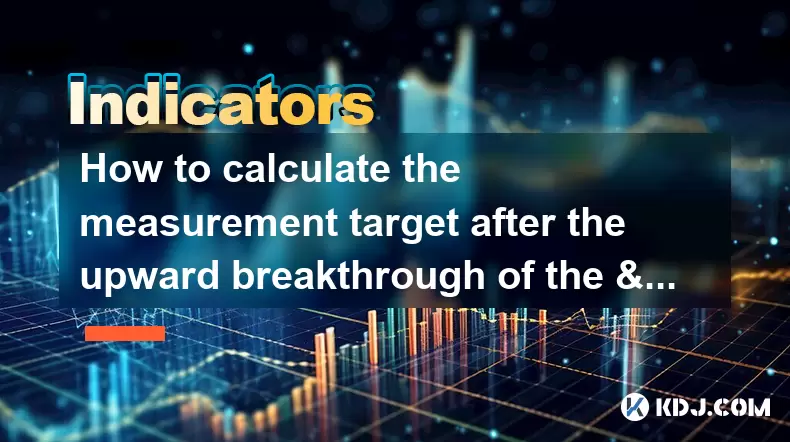
Understanding the Descending Wedge Pattern
A descending wedge is a technical analysis pattern typically found in price charts of cryptocurrencies. It is characterized by two converging trendlines: one drawn along a series of lower highs (resistance) and another connecting a series of higher lows (support). This pattern usually indicates a potential bullish reversal, especially when it appears at the end of a downtrend.
In the context of cryptocurrency trading, recognizing a descending wedge can be crucial for anticipating upward breakouts. Traders often look for volume confirmation during the breakout phase to ensure the move is legitimate and not a false signal. The key lies in identifying whether the price closes convincingly above the upper trendline.
Important: A valid breakout must occur with increased volume, which supports the strength of the move.
Confirming an Upward Breakout
Before calculating any measurement target after an upward breakout from a descending wedge, traders must first confirm that the breakout is genuine. This involves:
- Watching for a clear close above the upper trendline.
- Observing a spike in trading volume accompanying the breakout.
- Avoiding premature entries before confirmation.
If the price retests the broken trendline as new support shortly after the breakout, it adds further validation to the pattern.
Important: False breakouts are common in volatile crypto markets; patience and confirmation are essential.
Determining the Height of the Wedge
Once the breakout has been confirmed, the next step involves measuring the height of the descending wedge. This is done by taking the vertical distance between the upper and lower trendlines at the widest part of the pattern, usually near the beginning.
To calculate this:
- Identify the highest point within the wedge.
- Identify the lowest point at the same segment of the wedge.
- Subtract the lower value from the higher value to get the range.
This measured height becomes the basis for projecting the potential price target after the breakout.
Important: The height should be calculated at the broadest section of the wedge for accuracy.
Projecting the Measurement Target
After obtaining the height of the wedge, traders can project the measurement target by adding this value to the breakout level. Here’s how to do it step-by-step:
- Determine the exact price where the breakout occurred.
- Take the previously calculated wedge height.
- Add that height to the breakout price to arrive at the projected target.
For example, if the wedge height is $200 and the breakout occurs at $1,000, then the projected target would be $1,200.
Important: The measurement target serves as a guide rather than a guarantee due to market volatility.
Using the Target in Cryptocurrency Trading
In practice, the projected target acts as a reference point for setting profit-taking levels or adjusting stop-loss orders. Some traders may choose to exit partially at the target while trailing stops on the remainder for potential extended moves.
It’s also beneficial to combine this method with other indicators such as moving averages, RSI, or Fibonacci extensions to enhance trade validity.
- Consider using candlestick patterns near the target zone for added confluence.
- Monitor volume as the price approaches the target.
- Adjust expectations based on broader market conditions.
Important: Never rely solely on one technical pattern; always use additional tools for confirmation.
Frequently Asked Questions
What if the breakout occurs without a significant increase in volume?
A breakout without strong volume may indicate weak conviction among traders, increasing the likelihood of a false move. In such cases, it's safer to wait for a retest or seek additional confirmation before entering a trade.
Can descending wedges appear in both uptrends and downtrends?
Yes, descending wedges can form in both uptrends and downtrends. However, their implications differ. In a downtrend, they suggest a potential bullish reversal, whereas in an uptrend, they may indicate a continuation of the bullish trend.
How reliable is the measurement target in highly volatile crypto markets?
While the measurement target provides a useful estimate, extreme volatility in crypto markets can cause prices to overshoot or fall short of projections. Always consider market sentiment and macro factors alongside technical signals.
Is there a minimum number of touches required on each trendline for a valid descending wedge?
Typically, a valid descending wedge should have at least two touches on each trendline — upper and lower — to establish its structure. Fewer touches may result in an unreliable pattern.
Disclaimer:info@kdj.com
The information provided is not trading advice. kdj.com does not assume any responsibility for any investments made based on the information provided in this article. Cryptocurrencies are highly volatile and it is highly recommended that you invest with caution after thorough research!
If you believe that the content used on this website infringes your copyright, please contact us immediately (info@kdj.com) and we will delete it promptly.
- SecondSwap Expands to Avalanche (AVAX) Blockchain Targeting Locked and Vesting Digital Assets
- 2025-06-15 23:35:12
- With the start of Season 8, a Luckier Coin has been discovered alongside the Ring of Jinx. The secret hunting continues!
- 2025-06-15 23:35:12
- Remove Taxes on Crypto Profits
- 2025-06-15 23:30:12
- Crypto Markets Brace for Impact Ahead of Key U.S. Inflation Data
- 2025-06-15 23:30:12
- CBOE Global Markets Launches New Bitcoin Futures Contracts Called Cboe FTSE Bitcoin Index Futures (XBTF)
- 2025-06-15 23:25:12
- El Salvador Has Continued to Buy Bitcoin (BTC) Despite Striking a Deal with the IMF
- 2025-06-15 23:25:12
Related knowledge
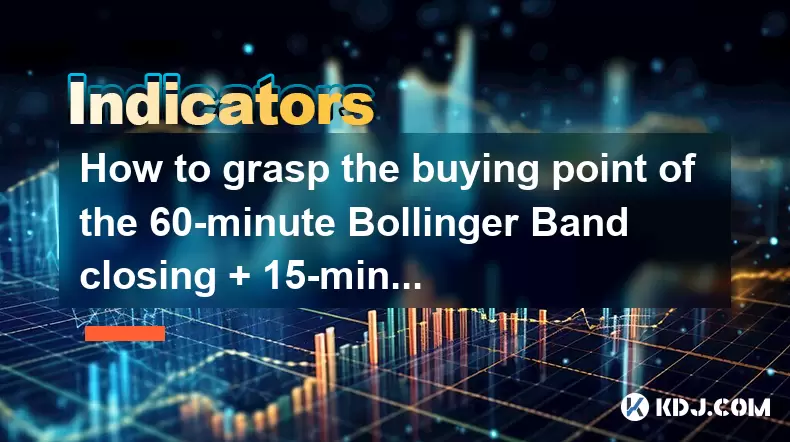
How to grasp the buying point of the 60-minute Bollinger Band closing + 15-minute MACD bottom divergence?
Jun 16,2025 at 12:03am
Understanding the Bollinger Band Closing Signal on a 60-Minute ChartThe Bollinger Band closing signal refers to a situation where the price closes outside the upper or lower band and then re-enters it in the subsequent candlestick. In this context, we focus on the lower Bollinger Band closing, which indicates a potential reversal from a downtrend. On th...
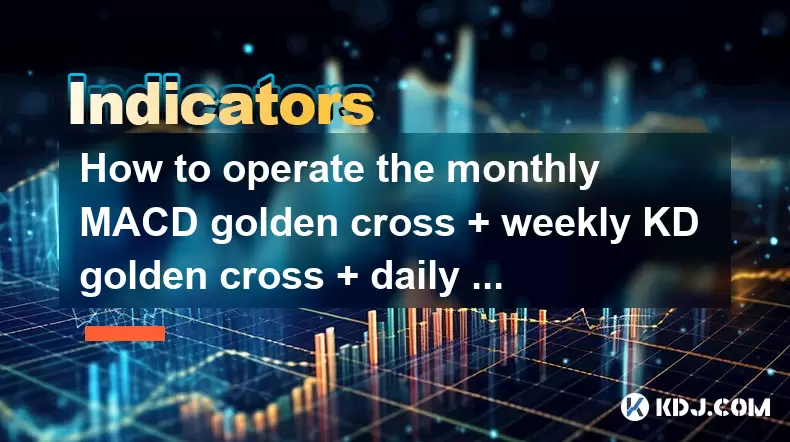
How to operate the monthly MACD golden cross + weekly KD golden cross + daily volume breakthrough?
Jun 15,2025 at 05:36am
Understanding the Strategy: Monthly MACD Golden CrossTo effectively operate the monthly MACD golden cross, traders must first understand what this signal entails. The MACD (Moving Average Convergence Divergence) golden cross occurs when the MACD line crosses above the signal line on a given chart timeframe. When this happens on the monthly chart, it sug...
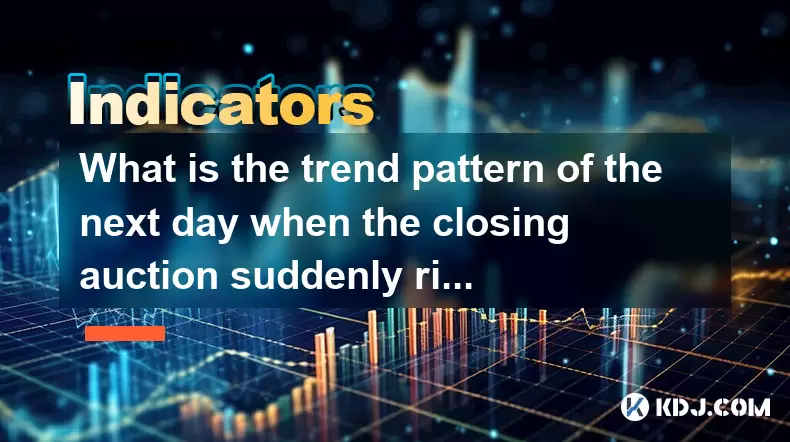
What is the trend pattern of the next day when the closing auction suddenly rises?
Jun 15,2025 at 08:15am
Understanding Closing Auctions in Cryptocurrency MarketsIn the context of cryptocurrency trading, a closing auction refers to a mechanism used by exchanges to determine the closing price of an asset at the end of a trading session. This process typically occurs within a short time window before the market closes for the day and aims to provide a fair an...

What does it mean when the volume fluctuates during the sideways trading at high levels?
Jun 15,2025 at 10:28am
Understanding Volume Fluctuations in Sideways TradingWhen volume fluctuates during sideways trading at high levels, it refers to the changes in the number of assets traded over a given period while the price remains relatively stable, moving within a defined range. This phenomenon typically occurs when the market lacks a clear directional bias—neither b...
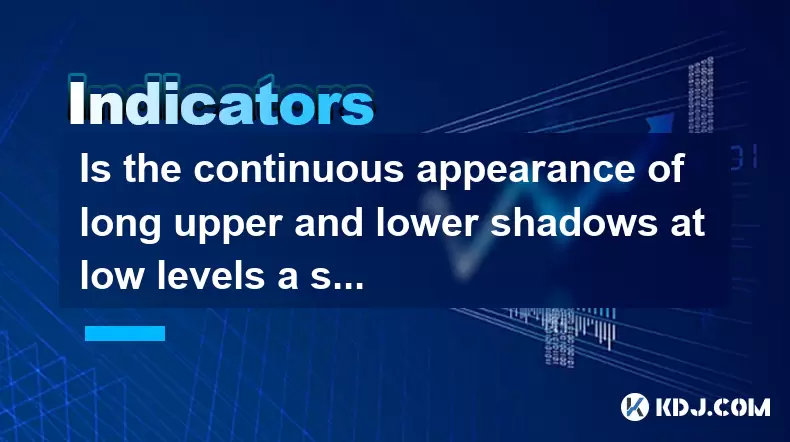
Is the continuous appearance of long upper and lower shadows at low levels a signal of accumulation?
Jun 15,2025 at 01:43am
Understanding Long Upper and Lower Shadows in Candlestick ChartsIn the world of cryptocurrency trading, candlestick patterns are widely used to analyze price movements. A long upper shadow, also known as a wick or tail, indicates that the price rose significantly during the period but was pushed back down by selling pressure. Conversely, a long lower sh...
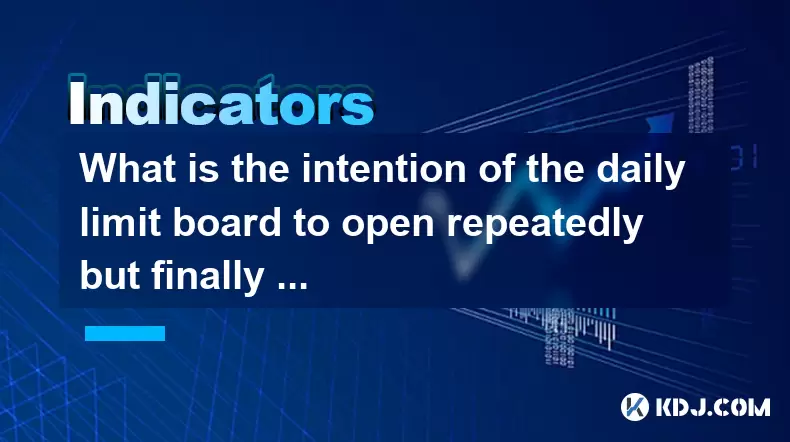
What is the intention of the daily limit board to open repeatedly but finally close?
Jun 15,2025 at 01:08am
Understanding the Daily Limit Board in Cryptocurrency TradingIn cryptocurrency trading, a daily limit board refers to a price movement restriction mechanism applied by certain exchanges or regulatory bodies. This mechanism is primarily used to prevent extreme volatility and panic selling or buying during periods of intense market fluctuation. When an as...

How to grasp the buying point of the 60-minute Bollinger Band closing + 15-minute MACD bottom divergence?
Jun 16,2025 at 12:03am
Understanding the Bollinger Band Closing Signal on a 60-Minute ChartThe Bollinger Band closing signal refers to a situation where the price closes outside the upper or lower band and then re-enters it in the subsequent candlestick. In this context, we focus on the lower Bollinger Band closing, which indicates a potential reversal from a downtrend. On th...

How to operate the monthly MACD golden cross + weekly KD golden cross + daily volume breakthrough?
Jun 15,2025 at 05:36am
Understanding the Strategy: Monthly MACD Golden CrossTo effectively operate the monthly MACD golden cross, traders must first understand what this signal entails. The MACD (Moving Average Convergence Divergence) golden cross occurs when the MACD line crosses above the signal line on a given chart timeframe. When this happens on the monthly chart, it sug...

What is the trend pattern of the next day when the closing auction suddenly rises?
Jun 15,2025 at 08:15am
Understanding Closing Auctions in Cryptocurrency MarketsIn the context of cryptocurrency trading, a closing auction refers to a mechanism used by exchanges to determine the closing price of an asset at the end of a trading session. This process typically occurs within a short time window before the market closes for the day and aims to provide a fair an...

What does it mean when the volume fluctuates during the sideways trading at high levels?
Jun 15,2025 at 10:28am
Understanding Volume Fluctuations in Sideways TradingWhen volume fluctuates during sideways trading at high levels, it refers to the changes in the number of assets traded over a given period while the price remains relatively stable, moving within a defined range. This phenomenon typically occurs when the market lacks a clear directional bias—neither b...

Is the continuous appearance of long upper and lower shadows at low levels a signal of accumulation?
Jun 15,2025 at 01:43am
Understanding Long Upper and Lower Shadows in Candlestick ChartsIn the world of cryptocurrency trading, candlestick patterns are widely used to analyze price movements. A long upper shadow, also known as a wick or tail, indicates that the price rose significantly during the period but was pushed back down by selling pressure. Conversely, a long lower sh...

What is the intention of the daily limit board to open repeatedly but finally close?
Jun 15,2025 at 01:08am
Understanding the Daily Limit Board in Cryptocurrency TradingIn cryptocurrency trading, a daily limit board refers to a price movement restriction mechanism applied by certain exchanges or regulatory bodies. This mechanism is primarily used to prevent extreme volatility and panic selling or buying during periods of intense market fluctuation. When an as...
See all articles

























































































